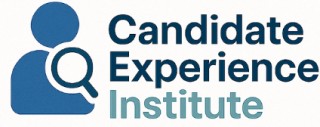
Understanding Candidate Expectations
Decoding What Candidates Truly Want
In today's competitive job market, understanding candidate expectations is crucial for businesses aiming to attract top talent. Candidates are not just looking for a job; they are seeking an experience that aligns with their values and career aspirations. This is where the essentials of candidate experience come into play, offering a comprehensive view of what candidates truly desire.
Firstly, candidates expect transparency throughout the recruitment process. They want clear communication about the role, the company culture, and what the application process entails. This is where effective communication skills become indispensable, as they help bridge the gap between candidates and employers. Active listening and clear, concise messaging can significantly enhance customer satisfaction, or in this case, candidate satisfaction.
Moreover, candidates appreciate a streamlined application process. They value their time and expect the process to be efficient and user-friendly. This is where leveraging technology can make a significant difference. By utilizing cloud essentials and other digital tools, businesses can simplify the application process, making it more accessible and less time-consuming for candidates.
Another key expectation is timely feedback and follow-up. Candidates want to feel valued and respected, and providing prompt feedback is a critical component of this. It closes the loop and ensures that candidates are not left in the dark about their application status. This aspect is closely tied to internal and external communication skills, which are essential for maintaining positive candidate interactions.
For those in the manufacturing sector, understanding candidate expectations can be particularly challenging due to the unique demands of the industry. However, by focusing on enhancing candidate experience in manufacturing assessments, businesses can better align their recruitment strategies with candidate expectations.
Ultimately, mastering the essentials of candidate experience requires a holistic approach that considers the entire candidate journey. By focusing on what candidates truly want, businesses can create a more engaging and rewarding experience that attracts and retains top talent.
Communication: The Backbone of Candidate Experience
Effective and Transparent Communication: A Key to Success
The role of communication in candidate experience cannot be overstated. It's the backbone that holds everything together, ensuring candidates are well-informed, engaged, and satisfied throughout the hiring journey. Excellent communication skills aren't just about speaking or writing well—they’re about fostering connections and maintaining clarity at every stage. Candidates crave transparency and timeliness, and both internal and external communication should reflect these values. Service essentials in communication encompass honesty, patience, and active listening. Every interaction should prioritize these qualities to build trust and enhance candidate satisfaction. Incorporating effective communication into your recruitment process can significantly benefit your business. Here are some ways communication aids in crafting an exceptional candidate experience:- Proactive Updates: Ensure that candidates receive regular updates on their application status. Acknowledging application receipt and providing projected timelines can set expectations and reduce applicant anxiety.
- Tailored Messaging: Customize communications to address the specific stages of the hiring process, whether through tailored emails, phone calls, or service courses. This personalized approach can lead to more positive candidate interactions.
- Feedback Mechanisms: Include opportunities for candidates to provide feedback on their experience. This can inform process improvements and demonstrate a commitment to continuous enhancement.
- Training for Consistency: Train your team members and service representatives to maintain a consistent tone and level of professionalism across all communications. Regular service training can ensure that every message conveys the company's employer brand effectively.
- Technology Integration: Utilize project management tools and communication platforms to streamline the process and ensure no communication is missed. Implementing cloud essentials and resource management systems can further enhance efficiency.
Streamlining the Application Process
Optimizing the Candidate Journey
Creating a streamlined application process is an integral part of providing a positive candidate experience. This process is not merely about making it easier for candidates to apply; it's also about ensuring clarity, efficiency, and respect for the candidate's time. One way to enhance this phase is by refining the application form itself. A well-designed application form prioritizes essential service information, aligning with the candidate's expectations as discussed earlier. The application should be intuitive, accessible, and devoid of unnecessary fields that could deter prospective applicants. Simplifying this step can significantly improve candidate satisfaction and their view of the company's respect for their time. Effective communication skills are equally pivotal throughout the application stage. Clear instructions and timely updates contribute to a smoother experience. It is beneficial to utilize tools that facilitate active listening and encapsulate effective communication principles, reinforcing the applicant's journey and keeping them informed about the progress of their application. Furthermore, leveraging technology to support the process cannot be overlooked. Automated systems that allow for seamless project management and tracking can be invaluable both for internal human resource teams and candidates alike. This also includes integrating cloud-based service tools that provide real-time updates and feedback. For organizations aiming to master the essentials of candidate experience, investing in service representatives who are trained in customer service and communication is crucial. These team members play a pivotal role in ensuring the application process is as welcoming and efficient as possible. Remember, the key is to ensure that each step in the application is aligned with business goals while maintaining a candidate-first approach. By doing so, your organization will not only attract top-tier talent but also build a positive reputation in the competitive hiring landscape. Explore insights for creating a voice of the customer template to enhance the application experience further.Feedback and Follow-up: Closing the Loop
Feedback: A Crucial Component of Candidate Experience
In the realm of candidate experience, feedback serves as a pivotal element that can significantly influence a candidate's perception of your organization. Providing timely and constructive feedback not only enhances the candidate's journey but also reflects your company's commitment to effective communication skills and customer satisfaction. It's essential to view feedback as a two-way street, where both the organization and the candidate can benefit from the exchange.
Follow-up: Building Lasting Impressions
Follow-up is not just a courtesy; it's a vital part of maintaining a positive candidate experience. By keeping candidates informed about their application status, you demonstrate respect and professionalism, which are key components of exceptional customer interactions. This practice helps in building trust and can lead to positive word-of-mouth, enhancing your brand's reputation among potential candidates.
Incorporating feedback and follow-up into your candidate experience strategy requires a structured approach. Here are some essentials to consider:
- Timeliness: Ensure feedback is provided promptly after interviews or assessments. Delays can lead to frustration and a negative view of your organization.
- Constructive Content: Offer specific, actionable insights that can help candidates improve their skills. This not only aids their professional growth but also positions your company as a pro in nurturing talent.
- Consistency: Maintain a consistent approach in your feedback and follow-up processes. This helps in setting clear expectations and enhances the overall candidate experience.
- Personalization: Tailor your feedback to the individual candidate. Personalized communication can make candidates feel valued and respected.
By focusing on these aspects, organizations can transform their candidate experience into a strategic advantage, fostering a positive relationship with potential team members and enhancing overall business outcomes. Remember, the goal is to create a seamless experience that aligns with the service essentials of your organization, ensuring that every interaction is meaningful and impactful.
Leveraging Technology for a Seamless Experience
Harnessing Technology for Positive Transformations
In today's digital age, technology plays an integral role in refining the overall candidate experience. By strategically leveraging technology, businesses can create a seamless, efficient, and satisfying recruitment journey for candidates. With the right technological tools, companies can streamline their service essentials by providing efficient application tracking and communication systems. Implementing best-in-class applicant tracking systems ensures that candidates receive timely updates about their application status, thereby improving customer satisfaction. Moreover, video interviewing platforms offer an innovative approach to gauge the skills and potential of candidates through dynamic interactions. This not only saves time for both the HR team and candidates but also enhances customer interactions by reducing geographical limitations. It’s not just about going through the motions; it's about effective communication that enriches the recruitment process. A course in cloud essentials could benefit service professionals, helping them manage internal and external communications efficiently. By utilizing cloud-based solutions, team members can collaborate more effortlessly on projects and service both customers and applicants better. Additionally, AI-driven chatbots can handle basic inquiries, freeing human resource professionals to focus on more complex tasks, thus ensuring that customer service remains swift and top-notch. Incorporating AI assessment tools within recruitment processes benefits the business by fairly evaluating candidates' project-related skills, ensuring that only the most qualified candidates are considered. This reflects a commitment to offering exceptional customer experiences by aligning recruiting strategies with company values. Service representatives who engage in service training focused on these technologies can sharpen their communication skills and active listening, leading to effective customer interactions and higher satisfaction. To stay competitive, businesses need to continually learn and adapt to new technological innovations, ensuring they're always providing learners and service enthusiasts with prime course content. As candidates become more accustomed to digital interactions, a seamless integration of technology into the recruiting process isn't just a pro move; it's essential. Understanding these tools' capabilities allows businesses to deploy resources more effectively and efficiently manage customer or candidate needs. By focusing on technology within recruiting, companies ensure that candidates' expectations align with project goals and business needs, ultimately leading to a robust candidate experience.Measuring and Improving Candidate Experience
Evaluating the Impact of Candidate Experience
Measuring candidate experience is not just about gathering data; it’s about understanding the impact of your recruitment process on potential hires. To truly master the essentials of candidate experience, businesses need to focus on key metrics that reflect the effectiveness of their strategies.
Key Metrics to Consider
- Net Promoter Score (NPS): This measures the likelihood of candidates recommending your company to others. A high NPS indicates a positive candidate experience.
- Time to Hire: Streamlining the application process, as discussed earlier, can significantly reduce the time it takes to fill a position, enhancing the candidate's view of your efficiency.
- Candidate Satisfaction Surveys: These provide direct feedback on various aspects of the recruitment process, from communication skills of team members to the clarity of course content in job descriptions.
- Offer Acceptance Rate: A high rate suggests that candidates are satisfied with the service essentials provided during the hiring process.
Continuous Improvement Through Feedback
Feedback and follow-up are crucial in closing the loop on candidate interactions. By actively listening to candidates and incorporating their feedback, businesses can refine their processes. This involves training service representatives and human resource professionals in effective communication and active listening skills.
Leveraging Technology for Insights
Technology plays a pivotal role in measuring and improving candidate experience. Cloud essentials and project management tools can help track candidate interactions and streamline communication. By integrating these technologies, businesses can gain valuable insights into their recruitment processes and identify areas for improvement.
Building a Pro Team for Candidate Experience
Ultimately, the goal is to build a team of service professionals who are adept at managing both internal and external customer interactions. This includes providing service training and courses that focus on the essentials of customer satisfaction and resource management. By investing in the development of your team members, you ensure that they possess the skills necessary to deliver an exceptional customer experience.













